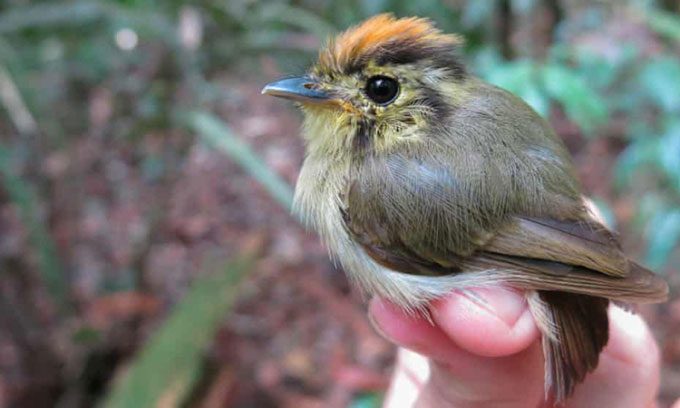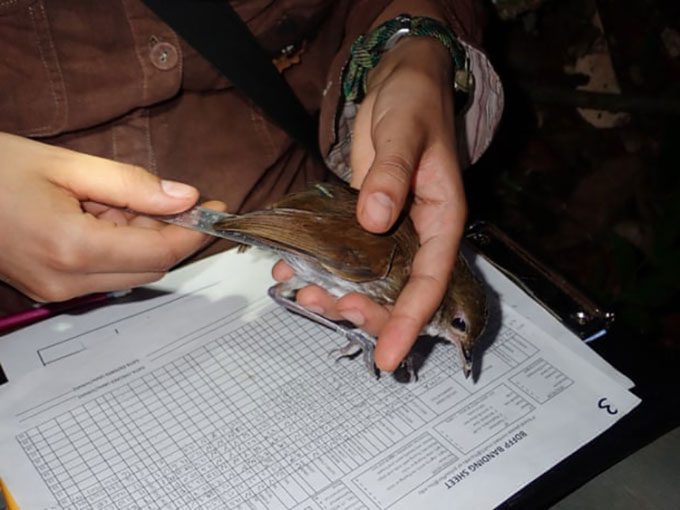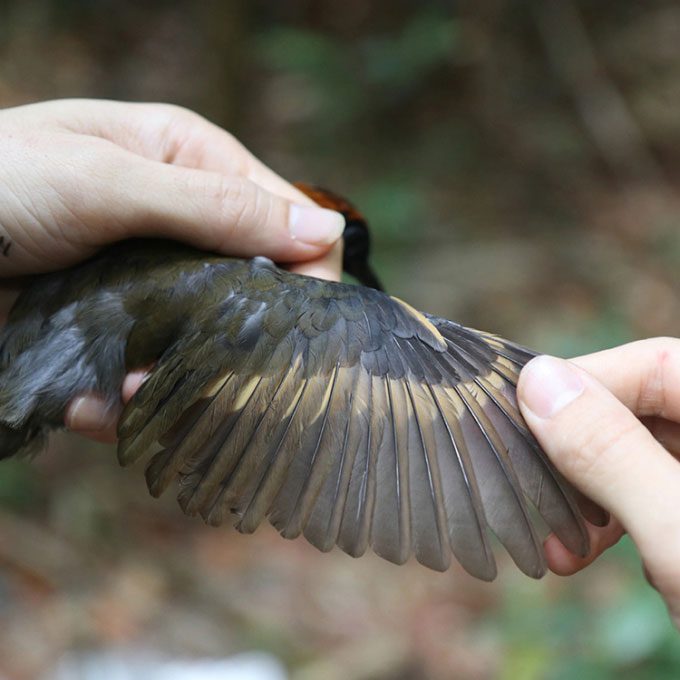Even the wildest species in the Amazon rainforest are being impacted by human-induced climate change.
According to a study published in the journal Science Advances on November 12, hotter and drier weather conditions are causing a reduction in body size while increasing wing spans among bird species living in tropical forests. These changes reflect challenges related to nutrition and physiology, particularly during the dry season from June to November.

The Platyrinchus coronatus species in the Amazon is a “victim” of climate change. (Photo: Cameron Rutt)
This conclusion was reached after biologist Vitek Jirinec and colleagues from the IERC ecological research center collected, tagged, and measured over 15,000 birds in the tropical rainforest over a span of 40 years.
They found that nearly all bird species have become smaller since the 1980s, with an average decrease of 2% in body weight each decade. This means that if a bird weighed 30 grams in the 1980s, its current weight is about 27.6 grams.
It’s not just birds; most living organisms on Earth are also decreasing in size to adapt to their environments.
A series of studies indicate that if the current trend of size reduction continues, many species will face extinction while ecosystems become unstable, thereby affecting humanity as well.

The research team spent four decades collecting and measuring over 15,000 birds. (Photo: Vitek Jirinec)
The data collected was not limited to a specific location but came from a wide range of tropical forests, indicating that this phenomenon is widespread. In total, Jirinec and his colleagues investigated 77 species that inhabit environments from the lower forest layers (dark and cool) to the upper canopy (sunny and warmer).
Birds at higher altitudes tend to fly more and are exposed to more heat, showing the most significant changes in body weight and wing size. The research team suggests this is an adaptation to thermal stress and energy pressure due to the decline of food sources like fruits and insects.

Changes in weight and size are a way for birds to adapt to climate change. (Photo: Vitek Jirinec)
Longer wings with a lower mass-to-wing ratio allow birds to achieve more efficient flights, similar to an airplane with a slender body and long wings that can ascend with less energy. Conversely, a higher mass-to-wing ratio requires birds to flap their wings faster to stay aloft, using more energy and generating more metabolic heat.
According to Associate Professor Brian Weeks from the University of Michigan, while it took thousands of years for Earth to warm during the Ice Age, leading to the extinction of many species, today, global temperatures are rising ten times faster than during that period.
It is important to note that the reduction in size, such as birds becoming smaller, will lead to decreased reproductive rates.
“The fact that organisms are shrinking will affect their reproductive capabilities, thus reducing the populations of those species. This is why many people are concerned about size,” emphasized expert Sheridan from the Carnegie Museum.
Worse still, the decrease in size can lead to rapid distortions in ecosystems. For instance, if predators shrink faster than their prey, they will require more prey to fill their stomachs or may even change their position in the food chain.


















































